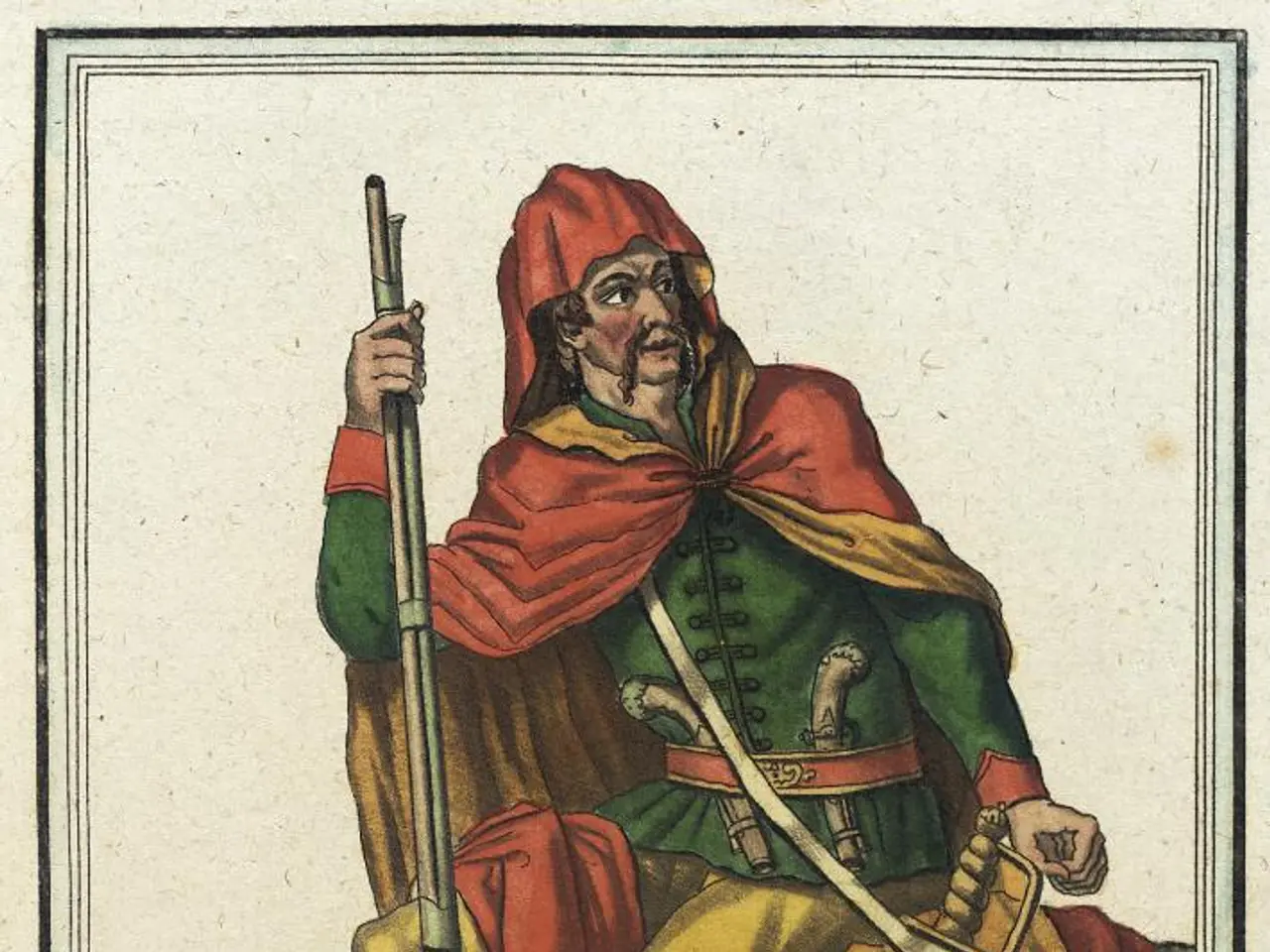Ancient enigma solved: A 1455 painting reveals a Stone Age puzzle hidden for millennia
In the heart of the 15th century, French court painter Jean Fouquet created a masterpiece, the Melun Diptych. This intriguing artwork, consisting of two hinged panels, has captivated scholars for centuries with its hidden visual puzzle.
The left panel features St. Stephen holding a closed book and a peculiar rock. Recent studies reveal that this rock is, in fact, an Acheulean hand axe – one of the oldest tools made by humans, dating back to around 1.7 million years ago. The region where the Melun Diptych originated had easy access to flint, a material used to make Stone Age tools like Acheulean hand axes.
The hidden image in the Melun Diptych depicts Chevalier kneeling within the folds of Mary's open cloak, appearing to be mystically nourished by her breast. When the panels of the diptych are folded together, Christ can be seen looking into the chest of the breastfed, symbolizing a literal look into the heart. This revelation transforms the artwork's meaning, creating a lactatio in the iconography.
The study published in the Cambridge Archaeological Journal suggests that Fouquet's work may conceal two secrets: one prehistoric, one theological. The alterations in the positions of Chevalier's head and St. Stephen's in the Melun Diptych were made to ensure visual alignment when the diptych is closed. The directions of the angels' gazes on the right panel take on a new, previously unimagined meaning.
Acheulean hand axes are significant in prehistoric times as one of the earliest and longest-used stone tool industries, reflecting a major technological advancement in human toolmaking. These bifacial cutting tools had longer, straighter, and sharper edges than earlier implements and were crafted with refined techniques, including the use of soft hammers like antlers. Their development indicates an increasing sophistication in adapting to different environments and meeting varied survival needs across regions.
Although Acheulean hand axes themselves are utilitarian, their manufacture represents one of humanity’s first steps toward deliberate craftsmanship and aesthetic consideration, which later influenced prehistoric art and symbolic objects. The standardization of form and skill required to produce these tools suggest early symbolic thinking and planning capacity, foundational cognitive behaviors for further cultural evolution.
The Melun Diptych is not just a testament to 15th-century artistry but also a bridge connecting the past and the present, showcasing the intersection of technology, adaptation, and the budding human capacity for culture and artistry in prehistory. The unique shape of Acheulean hand axes, now identified in the Melun Diptych, is likely deliberate, though some argue it may have resulted from repeated sharpening.
Acheulean hand axes, like the hidden image in the Melun Diptych, embody the intersection of technology, adaptation, and the budding human capacity for culture and artistry in prehistory. They are not only archaeological indicators of technological progress but also markers of early human cultural complexity that laid groundwork for the development of art, symbolic expression, and more advanced cultural practices in later periods. The Melun Diptych, with its hidden prehistoric artifact, stands as a testament to this rich history.
- The evolution of technology in prehistory can be exemplified by the Acheulean hand axes, one of the oldest and longest-used stone tool industries, which indicates an increasing sophistication in human toolmaking.
- The use of Acheulean hand axes, while utilitarian, represents one of humanity’s first steps toward deliberate craftsmanship and aesthetic consideration, influencing prehistoric art and symbolic objects.
- In the future, advances in technology, similar to the Acheulean hand axes, may facilitate new discoveries, bridging the gap between past and present, just like the Melun Diptych does.
- The study of artworks like the Melun Diptych can shed light on the intersection of technology, adaptation, and human capacity for culture and artistry during prehistoric times, underlining the importance of preserving and researching historical artifacts.




